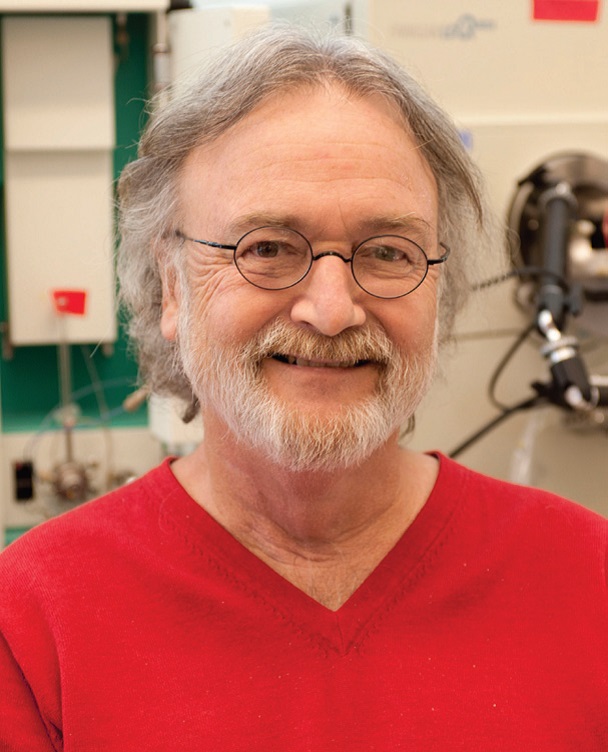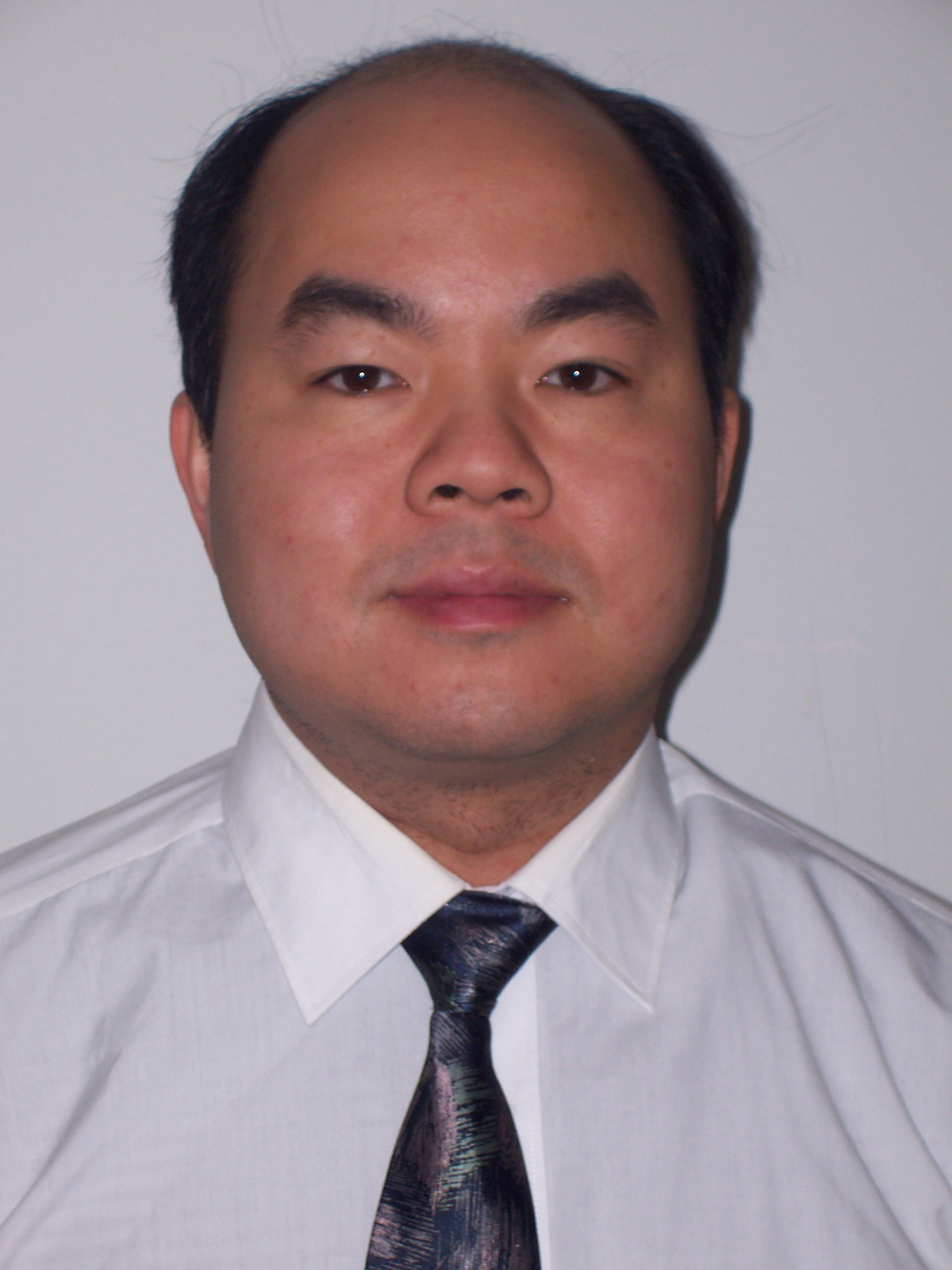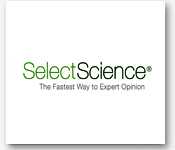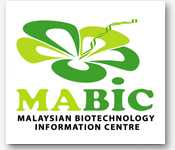Theme: Transcriptome analysis: Unveiling the Layers of Expressions
Transcriptomics 2015
Transcriptomics is a cross-disciplinary area mainly concerned with transcriptome analysis and RNA-Seq. It emphasizes on how the next generation sequencing is replacing microarrays as the choice method for expression profiling and quantify overall gene expression level. Transcriptomics research provides a profitable business opportunity to several pharmaceutical and biotech companies as these technologies have wide application areas such as drug discovery and research followed by clinical diagnosis of various disorders. With the arrival of advanced technological platforms, it creates a need for effective bioinformatics tools and services in order to manage and analyse huge amount of data released from these technologies. Transcriptomics-2015 mainly focusses on the universities, institutes and major societies along with companies which hold a big market in transcriptome technologies.
We welcome all interested participants to join us for our conference on Transcriptomics at the exquisite destination of Orlando.
Our Conference will provide a perfect platform addressing:
· Laudable talks by the top-notch of the global scientific community
· Sterling workshop sessions
· Remarkable Awards and Global Recognition to meritorious Researchers
· Global Networking with 50+ Countries
· Novel Techniques to Benefit Your Research
· Global Business and Networking Opportunities
· Exquisite Platform for showcasing your products and International Sponsorship
See more at: conference series.com
About Orlando:
Orlando, a city famous for Disney World also is home to an emerging biotech sector. Orlando hosts more than 4,300 life sciences-related companies that employ about 86,000 people. Orlando's collaborative spirit plays a key role in its success. Orlando biotech companies worked on the technology which was used at Florida Hospital Celebration Health to perform the world's first deep-brain stimulation procedure. According to the new market research report, the global Transcriptomics Market is estimated to be worth $1985.5 Million by the end of 2014 and is expected to reach $3,773.0 Million by 2019, at a CAGR of 13.7% from 2014 to 2019.
For more details, please visit: Transcriptomics Market Analysis
Track 1: Transcriptome analysis and Gene Expression-An Overview
For an International conference on Transcriptomics, an overview on Transcriptome analysis and Gene Expression is the first and the essential most topics to be discussed. While going in depth of the subject, it is necessary to understand Transcriptome as Key Players in Gene Expression. For that we should know the basics knowledge of how the central dogma works. This can be achieved by gaining proper knowledge about functioning of mRNA, tRNA and rRNA. Gene expression analysis experiments can focus on a subset of relevant target genes. The location of gene and relative distances between genes on a chromosome can be determined through Sequence mapping. Even in the absence of the reference genome, transcriptome can be created using de novo transcriptome assembly method. Globally around thousands of Universities and institutes are carrying research on gene expression and transcriptome analysis. Being specific are the University of Leeds, Case Western Reserve University, Arizona State University, Tempe. Institutes like The Genome Institute – St. Louis, Missouri and NIH - National Human Genome Research Institute are working tremendously towards the same where researchers are having a database of over 40,000 gene sequences that they can use for this purpose.
Track 2: RNA Editing and RNA Interference: Interplay
RNA editing is a molecular process through which some cells can make discrete changes to specific nucleotide sequences within a RNA molecule after it has been generated by RNA polymerase. RNA editing has been observed in the RNA sequences of viruses, archaea and prokaryotes. RNA editing occurs in the cell nucleus and cytosol, as well as within mitochondria and plastids. In vertebrates, editing is rare and usually consists of a small number of changes to the sequence of affected molecules. Two types of small ribonucleic acid (RNA) molecules – microRNA (miRNA) and small interfering RNA (siRNA) – are central to RNA interference. The study of RNA interference incudes its cellular mechanisms, variation among organisms, biological functions like immunity, down regulation of genes, up regulation of genes and its applications in Gene knockdown, Functional genomics, medicine and biotechnology. The University of Albany situated at New York is rigorously involved towards all the novel research on RNA. The RNA Institute maintained by Paul Agris (University at Albany) is the best known platform for carrying out RNA analysis. Added to that, The RNA Society formed in 1993 facilitates sharing and dissemination of experimental results and emerging concepts in ribonucleic acid research
Track 3: Next Generation Sequencing (NGS) Technologies
Next Generation Sequencing (NGS) Technologies enable a wide variety of methods, allowing researchers to ask virtually any question related to genome, transcriptome, or epigenome of any organism. Sequencing methods differ primarily by how the DNA or RNA samples are obtained and by the data analysis used. The numbers of methods is constantly growing. The most common are RNA-Seq: Whole Transcriptome Shotgun Sequencing, Exome Sequencing, De Novo Full-Length Transcriptome Analysis and Hybrid Sequencing Approach. Various NGS platforms in the market such as Illumina, SOLiD, and Roche, offer unprecedented ability to apply massively parallel sequencing of transcriptomics (RNA) and genomic (DNA) samples to understand disease and health. The enormous Differential Splicing and RNA Sequencing Data pose a fundamental problem of management and analysis. Various data analysis solutions eliminate the next-generation sequencing data management.
Track 4: Disease Interrogation and Applications of RNA-Seq
Disease interrogation & clinical applications of RNA-Seq involves different methods that are required for gene expression analysis. Like, we can find out the Alternative Protein-Coding Transcripts in Prostate Cancer to interrogate its nature and occurrence. Targeted RNA sequencing is a highly accurate and specific method for measuring expression of transcripts of interest, offering both quantitative and qualitative information. This allows for differential expression analysis, as well as allele-specific expression measurement and verification of the presence of fusion genes. The ability to obtain a complete picture of Intergenic Disease-Associated Regions provides clear understanding of how the underlying genome is converted into the functional proteins, allowing for clinical utility in patient classification, diagnosis, and individualized treatment. To understand which coding and non-coding RNAs are transcribed in the diseased cell, deciphering the Diseased Transcriptome by RNA-Seq and qPCR can be done. The Northwestern University Feinberg School of Medicine has a special unit called Centre for Genetic Medicine where bioinformatics analysis of a RNA-seq is performed. Other universities include The Rockefeller University and University of Bristol, UK
Track 5: Exploring the complexity of the Transcriptome
While exploring the complexity of the Transcriptome, the basic protocol of the identification of long stress-induced non-coding transcripts is followed. Analysis of the transcriptome on neurological basis can be done under the title of profiling microRNAs and circular RNAs in brain - implication for disease and development. Here we can find out how the genomic basis is responsible for the behavioural changes through neurological basis. Even this phenomenon can be controlled through Regulation of Transcriptional Heterogeneity. The basic strategy behind the all this mechanism comes from the molecular level which contain Chromatin and Histone Protein.
Track 6: Refining expression analysis
Refining expression analysis through more specific techniques gives a clear figure of protein involved in any biological phenomenon. The Association of Bimolecular Resource Facilities (ABRF) is dedicated to advancing core and research biotechnology laboratories through research, communication, and education. ABRF members include over 800 scientists representing 267 different core laboratories in 41 countries, including those in industry, government, academic and research institutions. RNA-Seq and Microarray Gene Expression are the two major tools used for gene expression analysis. Around 178 companies in USA are involved in the manufacturing of the equipment used for next generation sequencing and DNA microarray analysis. Mentioning some of the giants manufacturer for Transcriptome Profiling by RNA-Seq are the Applied Biosysytems and Illumina being the leader in the field. For Microarray, Affymetrix is the most reliable company, providing the quality from decades. ABRF Next-Generation Sequencing (ABRF-NGS) is the most effective technique for accurate sequencing data. For Ribonucleic acid, Single-cell RNA sequencing (scRNA-seq) is carried out which examines the RNA sequence information from individual cells with optimized next generation sequencing (NGS) technologies, providing a higher resolution of cellular differences and a better understanding of the function of an individual cell in the context of its microenvironment.
Epigenetic modulation of gene expression is responsible for tissue specific and temporal changes across growth and development. The most widely studied of these epigenetic modifications is DNA methylation of 5-methylcytosine at CpG dinucleotides and histone modification. This DNA methylation can be caused by small factors like smoking tobaccos. Aberrations of DNA methylation are associated with a range of diseases, including imprinting disorders and cancer. Recent advances in technologies have made it possible to study the epigenetic changes associated with these diseases using robust genome-wide technologies including the Infinium HumanMethylation450 BeadChip (henceforward denoted the 450 k array; www.Illumina.com. These intensities are then used to calculate DNA methylation levels, with advantageous throughput, cost, coverage and technical consistency. Gene silencing is also used for epigenetic regulation of gene expression. To study the modification on the genetic material of the cell called epigenome, Epigenomics comes into action. For all aspects of epigenetic principles and mechanisms in relation to human disease like diabetes and cancer, diagnosis and therapy Clinical Epigenetics is taken into consideration. It focuses on Clinical trials and research in disease model organisms. Currently, Pfizer is a major company carrying its research and development on Epigenetics.
Ulrich Mahlknecht is currently a Professor of medicine at the University of Heidelberg, and Head of the Department of Hematology/Oncology at St. Lukas Clinic in Solingen, Germany. His research focuses on novel targeted immunological and epigenetic concepts in the treatment of solid tumors and hematological malignancies.
Track 8: Functional Impact of Non-Coding RNA (ncRNA)
Non-coding RNAs (ncRNAs) are functional RNA molecules that are transcribed from DNA but are not translated into proteins. Functional Impact of Non-Coding RNA (ncRNA) involves regulation of gene expression at the transcriptional and post-transcriptional level. Those ncRNAs that appear to be involved in epigenetic processes can be divided into two main groups; the short ncRNAs (<30 nts) and the long ncRNAs (>200 nts). Long noncoding RNAs (lncRNAs) have gained widespread attention in recent years as a potentially new and crucial layer of biological regulation. Long noncoding RNA (lncRNAs) biochemically resemble mRNAs posited by Jacob and Monod, yet do not template protein synthesis. Rather, lncRNAs functioning as RNA genes to orchestrate genetic regulatory outputs. Today, lncRNA transcripts have emerged as a cryptic, but critical layer in the genetic regulatory code. It has been implicated in a range of developmental processes and diseases in which Long ncRNAs target proteins to specific genomic loci to affect transcription patterns. It also modulates the activity of protein-binding partners. They also act as precursors for small RNAs.
John L. Rinn is the Alvin and Esta Star Associate professor of Stem Cell and Regerative Biology at Harvard University and Medical School and Senior Associate Member of the Broad Institute. Our research aims to understand the role of long non-coding RNAs (lncRNAs) in establishing the distinct epigenetic states of adult and embryonic cells and their misregulation in diseases such as cancer.
Track 9: Cancer Genomics: Integrative and Computational Approaches
Oncogenomics is a relatively new sub-field of genomics that applies high throughput technologies to characterize genes associated with cancer. The study involves the research in to the Bioinformatics and functional analysis of oncogenes, which refers to the gene that has the potential to cause cancer. In tumor cells, they are often mutated or expressed at high levels.
Cancer genome sequencing requires the development of new techniques utilizing Genomics and bioinformatics tools for target assessment, including both experimental protocols and data analysis algorithms, to enable a deeper understanding of complex biological systems. Databases for Cancer Research have been developed which primarily study the Mutations in Mitochondrial DNA and Cancer to come up with effective and informative databases. It involves the development of Tools for integrative meta-analysis, 3c-based data integration and application of Networks and OMICS data, mathematical modeling and computational simulation techniques to the study of Integrative eqtl-based analyses, High performance genomics data visualization and Laboratory information management system to come up with Potential Diagnostic Applications.
Computational Genomics research has grown after the increased research in Genomics with major universities like Iowa State University, University Of California, and The George Washington University Concentrating on the growing topic. The Bisti Consortium has even launched the NIH and Government Programs and Initiatives in Biomedical Informatics and Computational Biology (BICB) with a list of programs concentrating on Computational Biology Research.
Track 10: Expression Profiling
Gene expression profiling simultaneously compares the expression levels of many genes between two or more sample types. This analysis can help scientists identify the molecular basis for phenotypic differences and select gene expression targets for in-depth study using other technologies. Gene expression profiling provides valuable insight into the role of differential gene expression in normal biological and disease processes. There are many techniques used for gene expression profiling. One of the major techniques for expression profiling includes Measuring Relative Activity by SAGE and Super SAGE, where SAGE stands for serial analysis of gene expression technology for the analysis of expressed genes. The other technique includes Gene annotation which provides functional and other information, for example the location of each gene within a particular chromosome. Some functional annotations are more reliable than others; some are absent. Gene annotation databases change regularly, and various databases refer to the same protein by different names, reflecting a changing understanding of protein function. Having identified some set of regulated genes, the next step in expression profiling involves looking for patterns within the regulated set for categorizing regulated genes. This can be done by finding similarities between the functioning of the proteins produced from different cell. Further categorization is done on the basis of relationship between two genes and their products by finding patterns among regulated genes. This is analysed by the fact that what these regulated genes actually are and what they do. Compared to Proteomics, the human genome contains on the order of 25,000 genes which work in concert to produce on the order of 1,000,000 distinct proteins. Knowledge of the precise proteins a cell makes, is more relevant than knowing how much messenger RNA is made from each gene, gene expression profiling provides the most global picture possible in a single experiment.
Gene Expression profiling has a growing research being utilized by major companies like Wafergen Biosystems, Afymetrix, SBI, Luminex, Asper Biotech, Genentech San Francisco to name a few. The research has been supported as a course by more than 470 universities and gains international funding too.
Track 11: Clinical Applications and Related Disorders
There are many Clinical Application and Related Disorders with Transcriptomics. Clinical Transcriptomics focus on the understanding of the molecular basis of diseases through translational research. The key aspects include genome-wide gene expression analysis from human patient samples. These techniques can be used to detect transcriptome involved in Neurological Disorders employing technologies such as RNA-Seq, Cap Analysis of Gene Expression (CAGE) or small RNA sequencing. Neurological disorders like Huntington disease involves a DNA segment known as a CAG Repeats. It’s a tri-nucleotide repeats that appear multiple times in a row. A very novel technique called INsPeCT (INtegrative Platform for Cancer Transcriptomics), which allows users with basic computer skills to perform comprehensive in-silico analyses of microarray, ChIP-seq, and RNA-seq data.
Transcriptomics has a growing research in its clinical applications with major schools taking up it is a course like Karoliska Institutet, University of Bristol, University of Ferrara, Boston University School of Medicine and also being a part of major labs like SciLife Lab.
Track 12: Transcriptional Regulation and Transcriptional Attenuation
Transcriptional Regulation and Transcriptional Attenuation deals with Regulation of Transcription by which a cell regulates the conversion of DNA to RNA and attenuation which is a regulatory feature causing premature termination of transcription. There are various classes of attenuators according to the type of molecule which induces the change in RNA structure. It can be a Small-Molecule-Mediated Attenuation: Introduction to Riboswitches, in which Riboswitch sequences (in the mRNA leader transcript) bind micro and macro molecules, which cause a conformational change in the mRNA. The other type of attenuation includes Protein-Mediated Attenuation and Ribosome-Mediated Attenuation. This phenomenon of transcriptional attenuation is most prominent in the trp Operon found throughout Archaea and Bacteria.
Major Universities as of University of Southampton, University of Utah, MBL, University Of Colorado Boulder, University of Manitoba and University of Michigan have bought up courses dealing exclusively with Transcriptome Regulation and Attenuation encouraging and attracting specific research worldwide. The topic attracts major research funding too from INRA, NIH, Laboratory of Genome Regulation and Universitat Pompeu Fabra to name a few.
Track 13: Genomics, Proteomics and Bioinformatics
Genomics, Proteomics and Bioinformatics are all from the field of Omics scinces, which revolves around Transcriptomics. Disruptions or changes at any step of gene expression are responsible for many genetic diseases. Through the use of Genome Analysis and Microarrays scientists can determine – in a single experiment – the expression levels of hundreds or thousands of genes within a cell. All these genome sequence data can be recalled Big Data Mining. Other field of genomics related to sequence analysis is Functional Genomics, Computational Genetics, Comparative Genomics, Translational Genomics, and Evolutionary Genomics.
Molecular evidence from a sequence-based application is a main agenda in Plant Genomics and Microbial Genomics. For a higher resolution of cellular differences and a better understanding of the function of an individual cell in the context of its microenvironment, Single Cell Genome sequencing is done which examines the sequence information from individual cells with optimized next generation sequencing (NGS) technologies. For more information about the products (proteins) of these cells, it is mandatory to understand the mechanism involved in their transcription and translation. In that case Proteomics of Transcription Machinery, proving itself helpful in explaining the expression of proteins by through ribosome in a Single cell. Coming to the Bioinformatics, the major breakthrough involves Drug designing and Drug Discovery, making the entire process more fast at quite low cost.
Genomic labs have the fastest growing market with nearly 250 universities concentrating on its research majorly to be named Whitetail Genetic Research Institute, Stanford University, National Human Genome Research Institute. Major companies concentrating on the research are Affymetrix, Applied Biosystems, Foster City, and Genentech etc. Drug Discovery research has the major growing market with applications in pharmaceuticals and medicine and thus major companies like Bristol-Myers Squibb Company, Isis Pharmaceuticals, Inc. , Merck & Co. Inc. and Johnson & Johnson focusing on the growing industry.
Track 14: Transcriptomics and Proteomics of Microorganisms
Transcriptomics and Proteomics of Microorganisms describe the roles of transcriptome and proteome in all the microorganisms like bacteria, fungi and viruses. To understand the phenomenon behind a viral infection, the proteins involved and their expression should be known which can be discovered by Transcriptomic and Proteomic Profiling of Viruses. The second section involves fungi and their metabolic changes. A wide variety of fungi have demonstrated the ability to colonize surfaces and form biofilms. This is a major concern requiring knowledge of the biofilm mechanisms which can be fulfilled by the transcriptomic and proteomic analysis of bacterial and fungal biofilms. To analyse complex bacterial flora, Large scale Analysis of Complex Bacterial Communities is performed. This large-scale cloning and sequencing of 16Srna involved in protein expression.
The National Science Foundation Offers awards and funding opportunities in the research and thus so named where discoveries begin.
Track 15: Transcriptomics and Proteomics of Plants
Data emanating from RNAseq studies have greatly improved the coverage of Transcriptomics and Proteomics of Plants. This technology further compounded transcriptome analysis by making it possible to identify differentially spliced transcripts etc. In the research, either microarray or RNAseq based datasets is used for Transcriptome Analysis of Agricultural Plants. These datasets are stored as Transcriptome sequence Databases. To clarify the phylogeny of green plants, sequences from the plastid genome are used which is termed as Plant Phylogenomics
Proteomics of Plant Study has been a major boon for many companies, to name a few being Accelrys, ActivX Biosciences, Beyond Genomics, Biomax Informatics AG and Biovation. The research as gained a lot of applications in industry have gained up as a major study in too in top schools as of International Plant Proteomics Organization, Murdoch University, University of Nottingham, University of Salford Manchester and University Of Nebraska–Lincoln.
Track 16: Transcriptome technologies Market
Studies on Transcriptome analysis are providing a large platform for all the industries to expose their new launch. Companies involved in the manufacturing can be the most benefited one from this kind of transcriptomics expo.
Track 17: New Horizons to the Transcriptome
Innovation and discoveries in the field of Transcriptomics are opening many unlocked doors for the researchers to concrete their ideas. Through transcriptomics meetings they can explore themselves globally.
See more at: conference series.com
Conference Highlights
- Transcriptome analysis and Gene Expression-An Overview
- RNA Editing and RNA Interference: Interplay
- Next Generation Sequencing (NGS) Technologies
- Disease Interrogation and Applications of RNA-Seq
- Exploring the complexity of the Transcriptome
- Refining expression analysis
- Epigenetics
- Functional Impact of Non-Coding RNA (ncRNA)
- Cancer Genomics: Integrative And Computational Approaches
- Expression Profiling
- Clinical Applications and Related Disorders
- Transcriptional Regulation and Transcriptional Attenuation
- Genomics, Proteomics and Bioinformatics
- Transcriptomics and Proteomics of Microorganisms
- Transcriptomics and Proteomics of Plants
- Transcriptome technologies market
- New Horizons to the Transcriptome
To share your views and research, please click here to register for the Conference.
To Collaborate Scientific Professionals around the World
| Conference Date | July 27-29, 2015 | ||
| Sponsors & Exhibitors |
|
||
| Speaker Opportunity Closed | Day 1 | Day 2 | Day 3 |
| Poster Opportunity Closed | Click Here to View | ||
Useful Links
Special Issues
All accepted abstracts will be published in respective Our International Journals.
- Journal of Transcriptomics: Open Access
- International Journal of Genomic Medicine
- Journal of Proteomics & Bioinformatics
Abstracts will be provided with Digital Object Identifier by


































